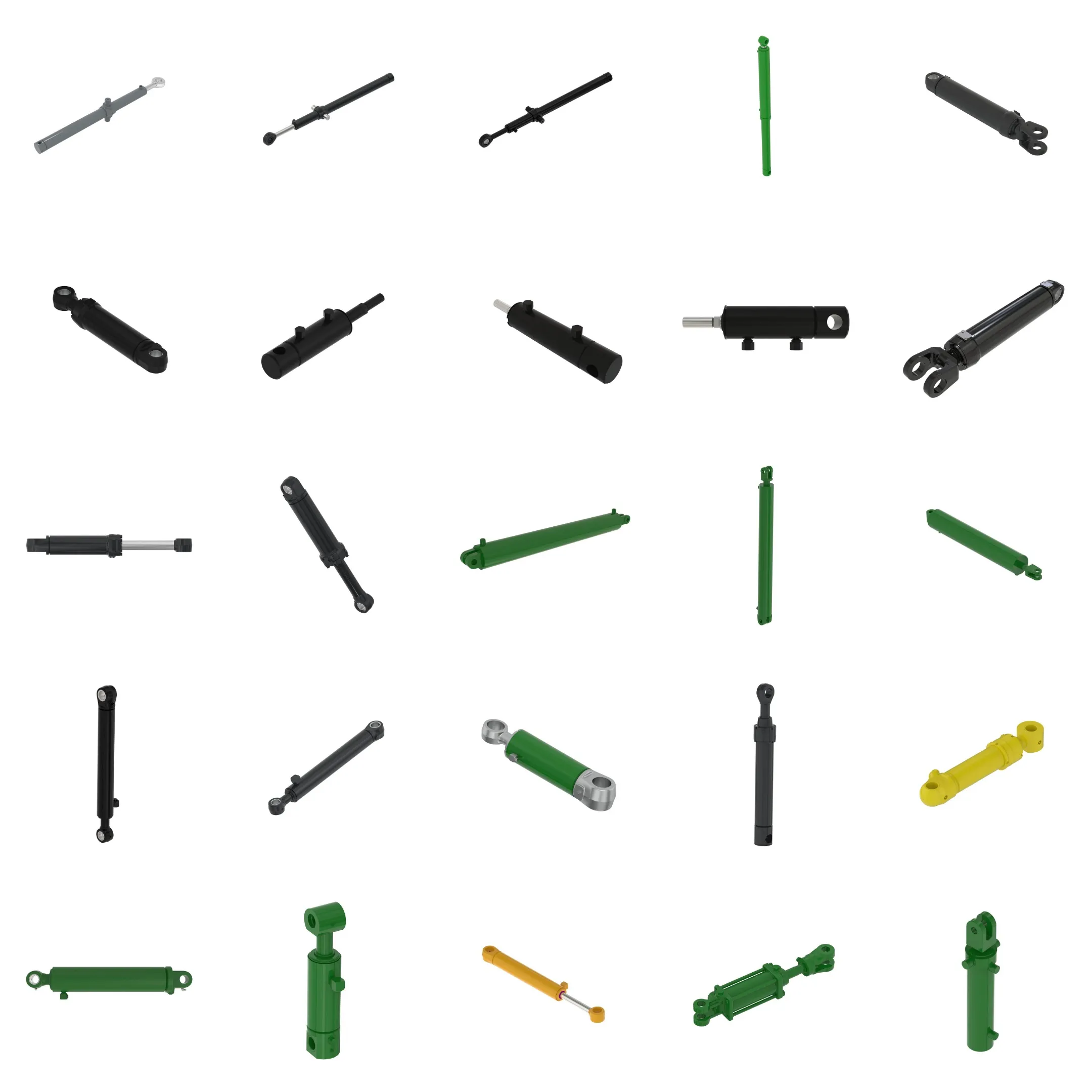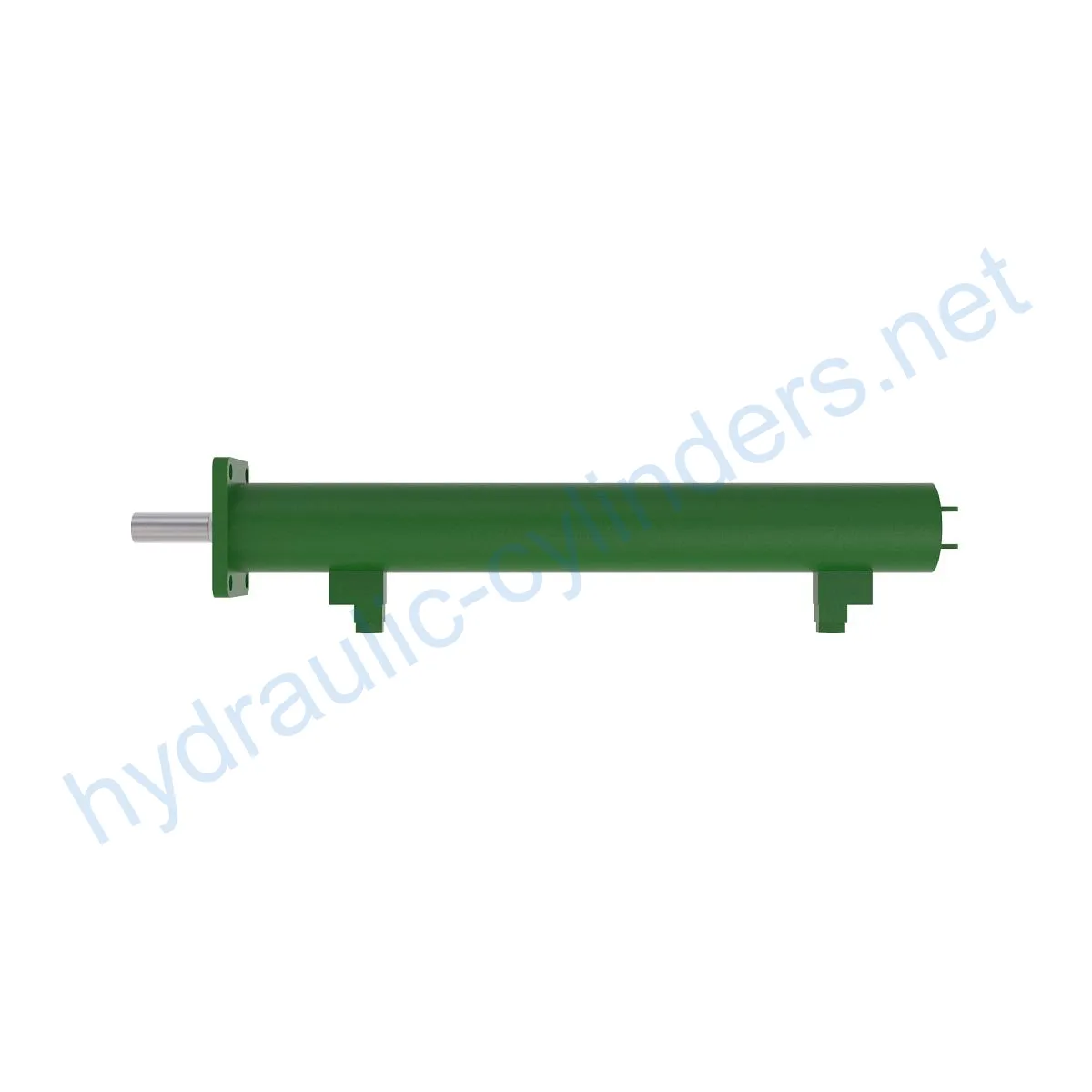Replacement Of AHC17330 Hydraulic Cylinder
Product Definition
The Replacement Of AHC17330 Hydraulic Cylinder is a vital component in various heavy-duty equipment. It is responsible for generating hydraulic force to move and lift various parts of the equipment.
Product Specifications and Applications
The Replacement Of AHC17330 Hydraulic Cylinder weighs 32.68 lbs, has a height of 5.2 inches, a width of 6.1 inches, and a length of 35.2 inches. It is compatible with the 4730 M4025, M4030, and M4040 models.
Product Features
- Improved equipment performance: Replacing damaged or worn hydraulic cylinders can restore the equipment’s normal operating ability, ensuring optimal performance in various applications.
- Enhanced safety: Regularly replacing hydraulic cylinders can reduce safety hazards caused by cylinder failures, ensuring the safety of both operators and equipment.
- Overload protection: New cylinder designs typically consider better overload protection mechanisms, enhancing safety.
- Quick installation: Modern hydraulic cylinder designs usually consider ease of installation and replacement, reducing downtime.
- Standardized components: Many hydraulic cylinders are standardized products, making it easier to obtain replacement parts on the market.
Our company can produce a perfect replacement for these hydraulic cylinders, ensuring seamless equipment operation.
Product Applications
The Replacement Of AHC17330 Hydraulic Cylinder is used in various heavy-duty equipment, including but not limited to:
- Excavators: Hydraulic cylinders in excavator arms or buckets may require replacement due to long-term use or overload, restoring normal operation.
- Cranes: Crane boom hydraulic cylinders wear out easily during frequent lifting and lowering, requiring regular replacement to ensure safety.
- Tractors: Hydraulic cylinders in the front loaders of tractors may leak or experience performance decline due to constant lifting and tilting operations, necessitating replacement.
- Harvesters: Hydraulic systems in harvesters endure high pressure during operation, and cylinders may become damaged due to fatigue, requiring timely replacement to maintain work efficiency.
- Automated production lines: Hydraulic cylinders are used to control robotic arms and other automation equipment. Cylinder failure can affect production efficiency and must be replaced immediately.
- Die-casting machines: Under high-pressure and high-temperature environments, hydraulic cylinders can experience performance decline. Regular replacement can ensure product quality.
- Mining equipment: Hydraulic cylinders are used to lift and move heavy objects in mining equipment. Due to the harsh working environment, regular inspection and replacement are necessary to avoid equipment failure.
- Bulldozers: Cylinder wear in bulldozer blade arms may cause a decline in bulldozing ability, requiring timely replacement to maintain operational efficiency.
Maintenance and Repair
Regular maintenance is crucial to the performance and longevity of hydraulic cylinders. The following tasks should be performed:
1. Regular Inspection
Inspect the cylinder for leaks, cracks, and other damage. Replace any worn or damaged components immediately.
2. Appropriate Lubrication
Use proper lubrication to maintain optimal performance and prevent corrosion.
3. Sealing Replacement and Calibration Inspection
Replace worn seals to prevent leaks and ensure proper calibration.
Proper installation, lubrication, and adjustment are critical to the hydraulic cylinder’s performance. Correctly align the cylinder during installation, use appropriate installation brackets to secure the cylinder, and follow recommended inspection, repair, and replacement procedures. Services for replacement parts and rebuilding, as well as tips for extending the cylinder’s lifespan, should be provided.
Safety Considerations and Environmental Factors
When using hydraulic cylinders, safety precautions are essential. Operators should be aware of potential hazards and follow the recommended safety guidelines. Additionally, proper disposal and recycling of hydraulic cylinder components are necessary to minimize environmental damage.
Troubleshooting and Common Problems
Hydraulic cylinder problems can be caused by several factors, including inadequate lubrication, improper installation, worn seals, and damage to cylinder components. To diagnose and solve problems effectively, follow the recommended troubleshooting procedures.
Product Design and Selection Criteria
When designing and selecting hydraulic cylinders, several factors should be considered, including load capacity, sealability, durability, safety, and maintainability. Each of these factors should be expanded upon to provide proper insight.
Seals and Lubrication
Hydraulic cylinder seals wear out over time, affecting the cylinder’s overall performance. Replacing seals with wear-resistant materials and using appropriate lubrication can extend the cylinder’s lifespan and increase its performance.
Preventive Maintenance
Preventive maintenance measures can help minimize breakdowns and extend the cylinder’s operating life. These measures should be expanded upon and explained in detail.
Installation Instructions
Proper installation of hydraulic cylinders is essential for optimal operating performance. Correct alignment and the use of appropriate installation brackets are critical to ensuring the cylinder’s longevity and functionality.
Our company is a leading manufacturer and distributor of hydraulic cylinders in the domestic and international markets. We offer a wide range of products, professional services, international certifications, and customized solutions. Our state-of-the-art production equipment and top-notch after-sales service make us a leader in the industry.
Author: lyl


参观我们的 VR 工厂
通过以下方式参观我们的 VR 工厂
液压缸应用:


